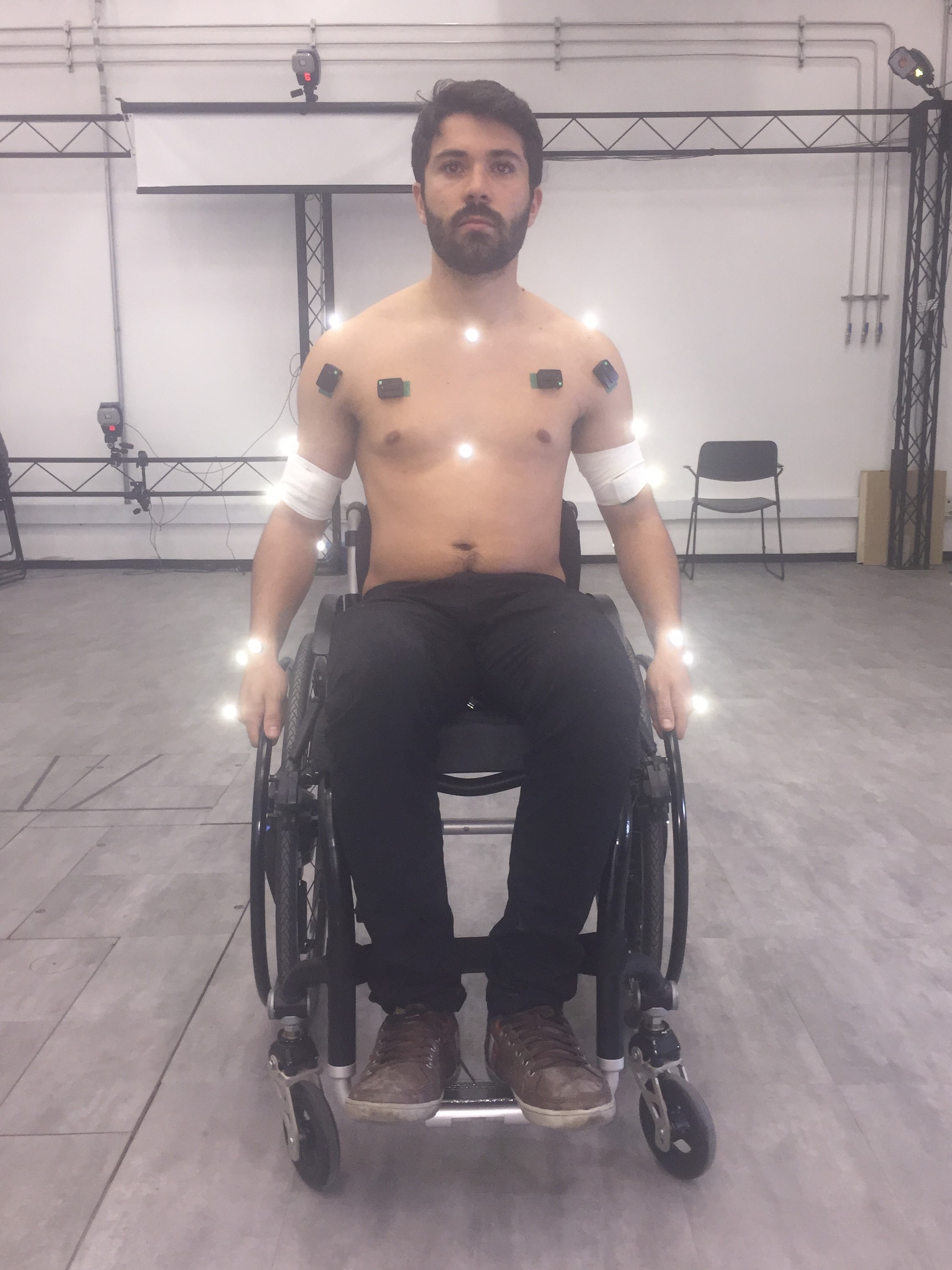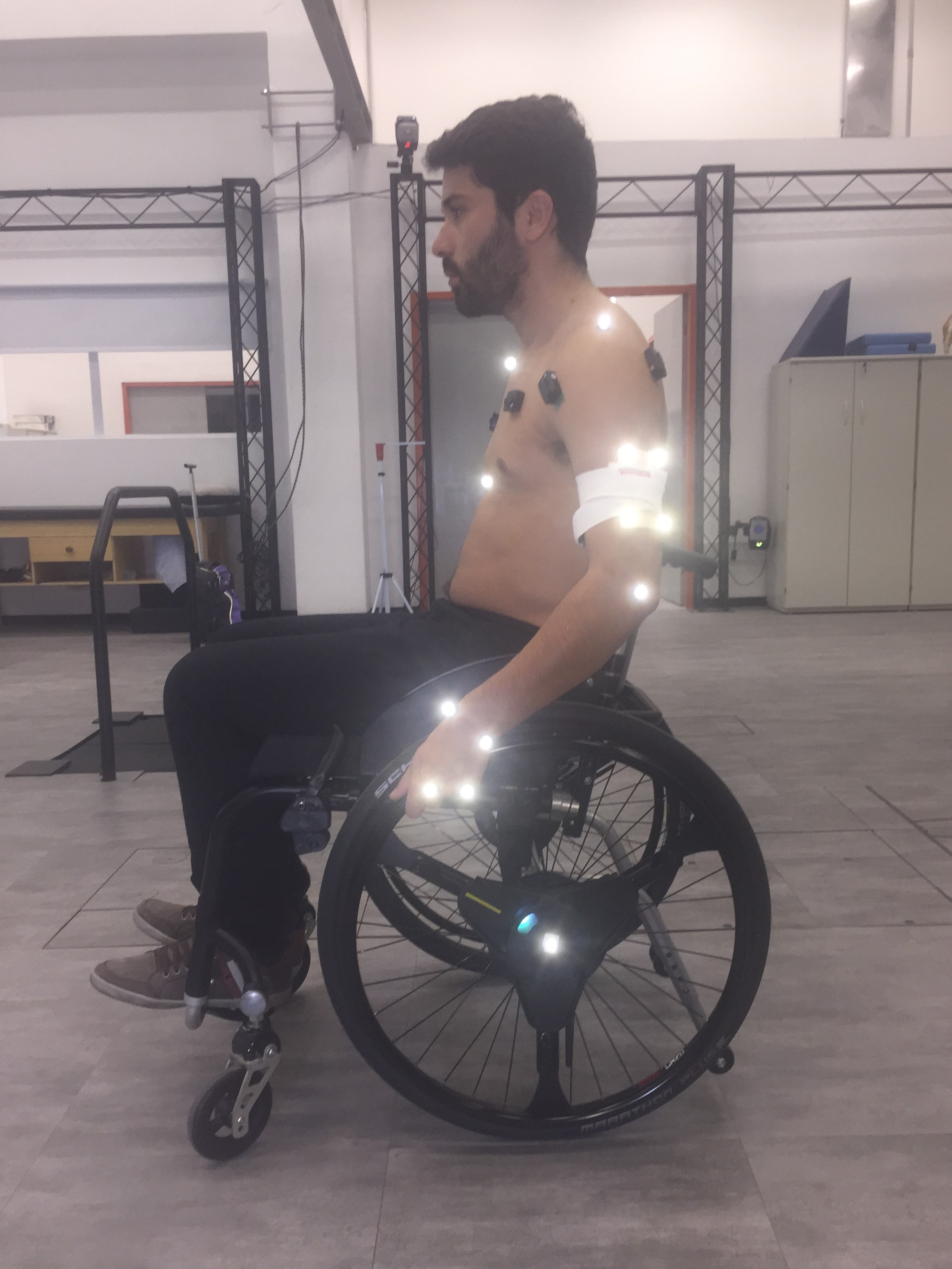Wheelchair Propulsion Analysis using Motion Capture and SmartWheel
As reported in 2010 by Instituto Brasileiro de Geografia e Estatística(IBGE), there are 45.6 million Brazilians with some kind of disability. Among them, 7% have motor disabilities and are users or potential users of wheelchairs. In daily life, many wheelchair users suffer upper limbs injuries and face difficulties such as excessive effort during wheelchair propulsion on inclined surfaces and obstacle negotiation.
In colaboration with Biomechanics and Motor Control Laboratory, I collected a variety of information during the propulsion, such as: Force and moment signals during the propulsion from the whelchair wheel; Muscle activation (EMG signals) from a variety of muscles during the propulsion; and 3D position of the markers.


Skills Developed
- Motion Capture using Motion Analysis software.
- Force Measurement.
- Biomedical Signal Processing.
Refereences
-
BMClab et. al., Biomechanics and Motor Control Laboratory of the Biomedical Engineering program at the Federal University of ABC.
-
Jaimes, Kristy Alejandra Godoy, and Marcos Duarte. Avaliação Biomecânica De Usuários De Cadeira De Rodas Manual. 2016.
-
Wu, Ge, et al. "International Society of Biomechanics. ISB recommendation on definitions of joint coordinate systems of various joints for the reporting of human joint motion—part II: shoulder, elbow, wrist and hand." J Biomech 38.5 (2005): 981-92.

